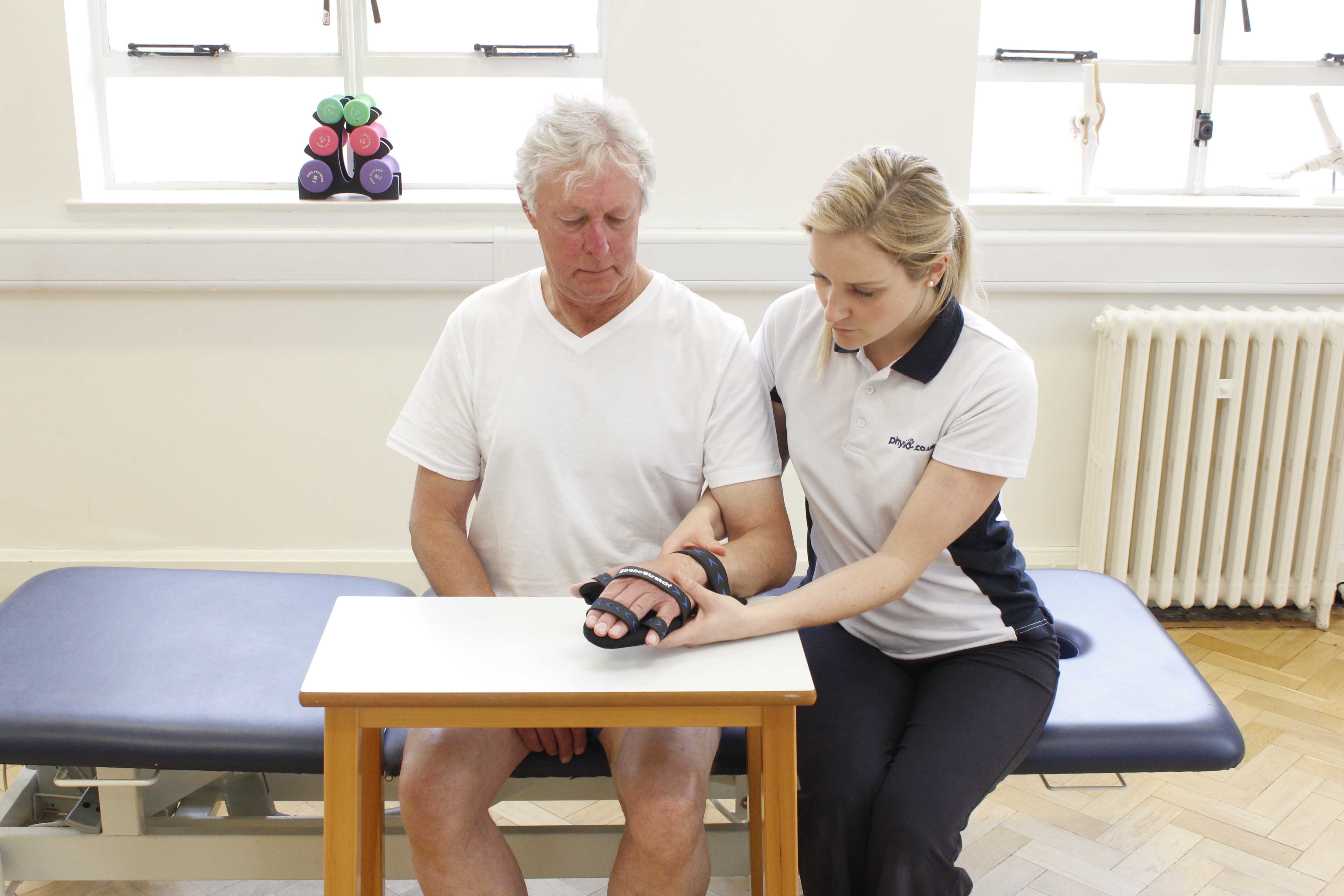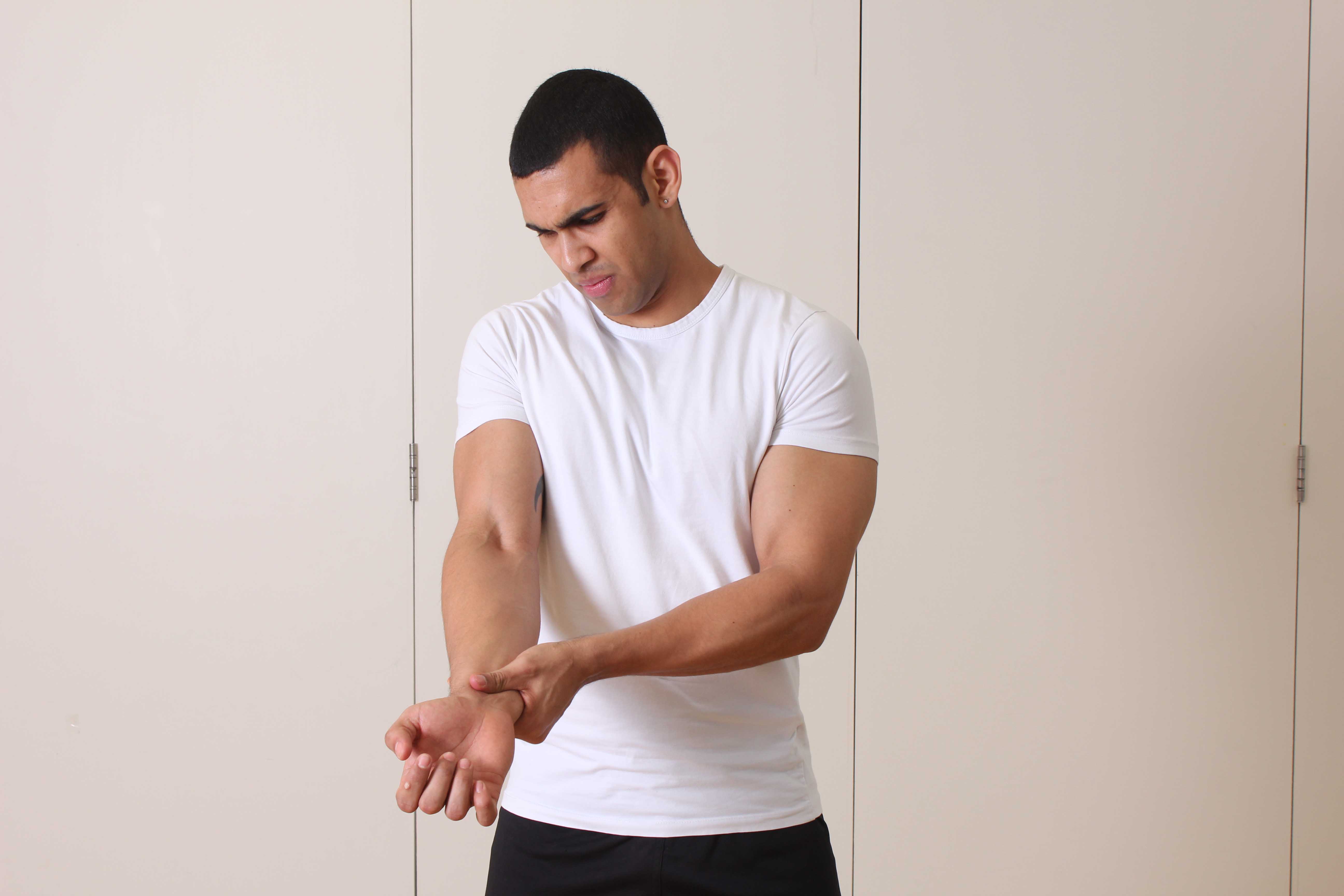What is wrist tendinopathy?
Wrist tendinopathy is swelling within one or more of the tendons at the wrist joint. Physiotherapy should be part of your rehabilitation programme for wrist tendinopathy.
How does wrist tendinopathy happen?
The tendons in the wrist joint transmit forces produced by the forearm muscles to the hand and fingers. Repetitive use of the hand and fingers can lead to microscopic tears within these tendons. The wrist swells to repair these microscopic tears. The swelling within the tendon is tendinopathy.
 Above: Therapist adjusting splint used in treatment of wrist and hand conditions
Above: Therapist adjusting splint used in treatment of wrist and hand conditionsWhat are the symptoms of wrist tendinopathy?
Wrist tendinopathy causes pain within the affected tendon as it crosses the wrist joint. This normally develops gradually. At first, the tendon may only be painful following use. Swelling, creaking and wrist stiffness may also be present. The initial signs of wrist tendinopathy are often ignored, as they disappear quickly with use of the wrist and hand or with heat (i.e. a hot shower) over the wrist. However, without treatment, the tendinopathy can progress and the pain within the tendon may become more intense and gradually more frequent until it is present all of the time.
Other symptoms of wrist tendinopathy include::
What should I do if I have wrist tendinopathy?
Wrist tendinopathy does not usually get better without physiotherapy treatment. If you have or suspect you have wrist tendinopathy, you should consult a physiotherapist. In the meantime, you can begin initial treatment. This should consist of icing your wrist following periods of activity with a bag of frozen peas or crushed ice wrapped in a moist towel applied for 15–20 minutes.
 Above: Wrist tendinopathy can be frustrating and unformfortable long term. Book in to see one of our friendly therapists for advice on how to treat it.
Above: Wrist tendinopathy can be frustrating and unformfortable long term. Book in to see one of our friendly therapists for advice on how to treat it.Physiotherapy treatment for wrist tendinopathy.
Physiotherapy is very important in the treatment of wrist tendinopathy. Your physiotherapist can diagnose your problem, establish its severity and design an appropriate treatment plan. Treatment may involve activity modification, soft tissue treatment such as massage and stretching, electrotherapy and the progression through a series of specific strengthening exercises. Your physiotherapist will also be able to assess and determine why you developed wrist tendinopathy and address this during your recovery to prevent a re-occurrence when you return to normal activities.
Other treatment options include:
- Wax therapy
- Postural Realignment
- Proprioceptive Exercise
What shouldn’t I do if I have wrist tendinopathy?
If you have or suspect that you have wrist tendinopathy, you should not ignore it. Your pain may get better as you use your hand and wrist; however, using you hand and wrist may interfere with the healing process and cause further damage. If this occurs, your recovery may be prolonged and it may take a number of months for you to make a full recovery.
Could there be any long-term effects from wrist tendinopathy?
Wrist tendinopathy does not produce any long-term effects, if it is properly diagnosed and appropriately treated. If not, it can lead to prolonged pain in the wrist.
To arrange a physiotherapy assessment call Physio.co.uk on 0330 088 7800 or book online today.

 0330 088 7800
0330 088 7800

































